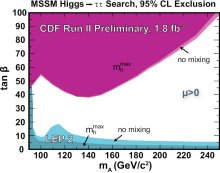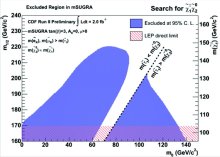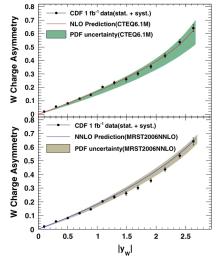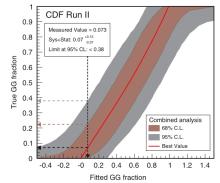
Exclusion region in pseudoscalar Higgs mass vs. tan(beta)
from the h->tau tau analysis
(Note that theoretically interesting
regions below tan(beta) ~40 are becoming accessible to this analysis)
Reference
Reference

CDF m0 - m1/2 mSUGRA limits derived from the
Rutgers trilepton analysis. These are the first limits
on chargino mass, shown on the right hand scale, from a hadron collider
Reference
Reference

The measured W production charge asymmetry and predictions
from (a) NLO CTEQ6.1 and
(b) NNLO MRST 2006, with their associated PDF uncertainties
Reference
Reference

Measurement of the fraction of t-tbar production via gluon-gluon
fusion, Gf. In the data, we find fitf=0.073, which yields
Gf=0.07-0.07+0.15 and Gf < 0.38 at the 95% C.L.
Reference
Reference